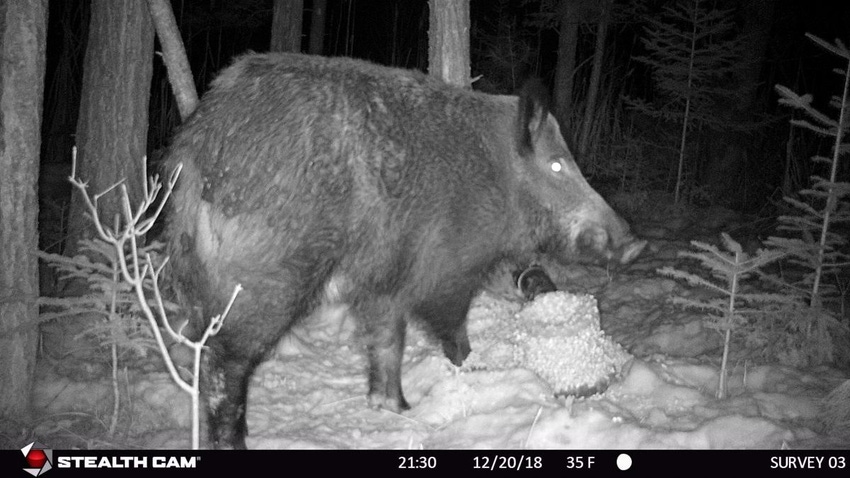Feral boar in Vermont tests positive for pseudorabies
Vermont not known to have an established feral swine population and has been certified PRV free since 1995.
May 14, 2019

The Vermont Agency of Agriculture, Food & Markets (VAAFM) announced May 9 that a feral boar shot March 25 in the northeastern corner of the state has tested positive for pseudorabies virus (PRV) infection.
The agency said the single feral pig was shot and killed by the U.S. Department of Agriculture's Wildlife Services after many months of sightings near Lyndonville, Vt., and VAAFM was notified of the positive PRV test result on April 29.
At this time, Vermont is not known to have an established feral swine population, VAAFM said, noting that the state has been certified free from PRV since October 1995.
PRV is not related to rabies and does not affect people; however, the disease is a threat to domesticated swine. PRV can cause abortions and stillbirths in adult swine and is nearly 100% fatal in young pigs. Pigs that survive the infection can shed the virus throughout their lives, thus spreading the disease and serving as a source of infection to their herd mates and other farms, VAAFM said.
Typically, feral swine are the reservoir for this illness, which is transmitted through nose-to-nose contact. PRV can be fatal in other livestock species, such as cattle, sheep and goats, as well as in dogs and cats.
VAAFM said it is working with USDA's Veterinary Services and Wildlife Services and the Vermont Fish & Wildlife Department to address this issue through continued monitoring for the presence of feral swine, assessment of the disease risk to domesticated swine and active on-farm disease testing. VAAFM will be contacting swine owners located in Essex, Caledonia and Orleans counties in northeastern Vermont over the next few weeks.
Currently, VAAFM said officials have no knowledge of any other feral swine in Vermont or the area where this pig was recovered. Multiple sightings were made through trail camera photos and were analyzed to confirm it to be the same pig in each image; the pig was always photographed alone.
VAAFM noted that feral swine (Sus scrofa) in the U.S. are typically escaped domesticated pigs -- descendants of introduced European wild boar populations or a hybrid of the two.
Feral swine can be found from Florida to Washington, with an estimated population of 5 million nationwide, and the non-native animals have expanded their range from 17 to 39 states in the last 30 years.
Along with property and wildlife destruction, feral swine can threaten the health of people, livestock and pets by transmitting as many as 30 pathogens and 37 parasites, VAAFM said.
You May Also Like



